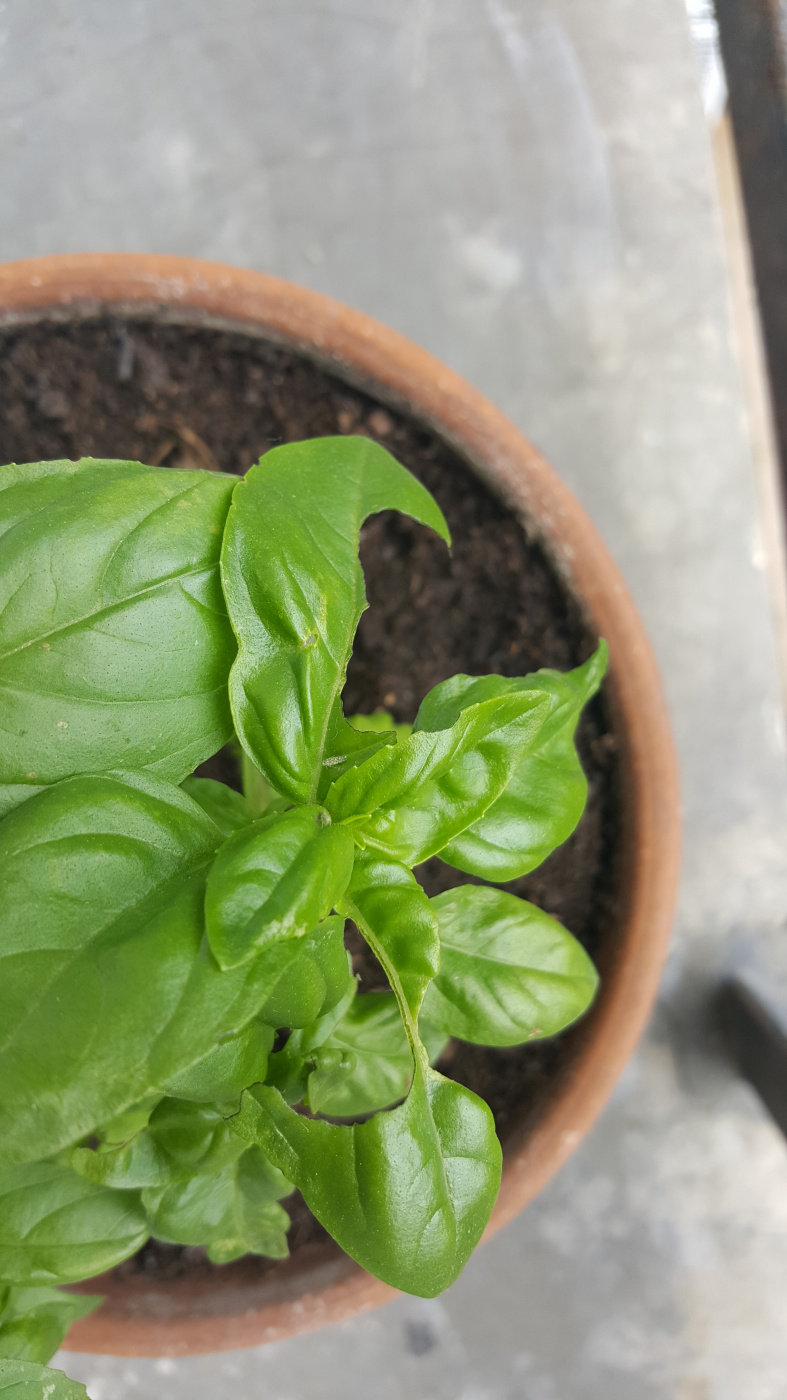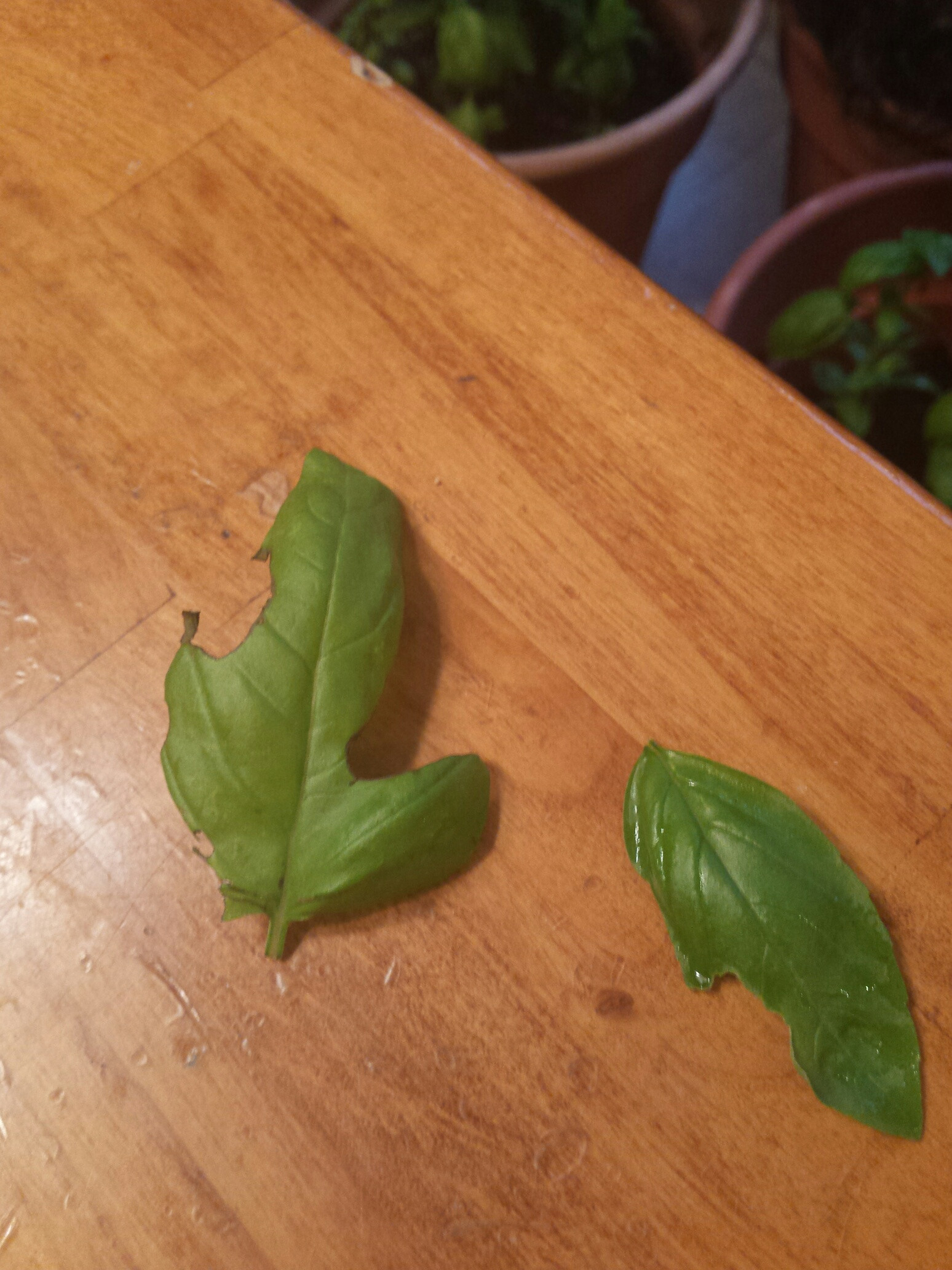
Slugs and snails are a nuisance for everyone who grows vegetables, but they are especially troublesome if you are growing herbs because they like basil plants.
The easiest approach to protect your basil from slugs and snails is to grow it in pots, then use salt and Vaseline to cover the outside of the container to keep slugs out. Slugs and snails cannot cross a line of salt to get to your basil plants because salt dehydrates them.
Regularly mowing your lawn will lessen the preferred habitat of tall grass for slugs, and maintaining a healthy garden ecosystem will boost slug predators, which will assist to naturally lower the population.
Basil is not often well protected by many of the conventional techniques for slug and snail management, such as copper tape, cracked egg shells, coffee grounds, etc. Commercial slug pellets should be avoided since they can be hazardous to wildlife and pets.
The simplest, most successful technique to stop slugs from eating basil plants in pots is to use Vaseline and salt as a repellent.
Read on to learn exactly how to put this solution into practice so you can enjoy the flavor of basil without having to share it with slugs.
Table of Contents
Stop slugs Eating Basil in Pots and Containers

With a few tweaks, you can keep the slugs away from your basil and separate it more easily from possible hungry slugs.
Slugs cannot cross a line of salt (common table salt), as their permeable skin allows them to absorb the salt and cause dehydration, which may result in death.
The obvious issue is that since salt dissolves in water, every time it rains or you water the basil, the barrier of salt may be washed away, allowing slugs to access your basil plant.
- The solution is to grow basil in containers or pots with a downturned edge. This produces a practical rain shadow that is dry and shielded from the elements.
- The salt won’t wash away after rain or watering if you draw a line of salt around the outside of the pot or container in the rain shadow of the rim.
- Any snail or slug that tries to crawl up the line of salt will be forced to make their way back down from the pot, protecting your basil.
- Vaseline should be evenly applied around a pot or container’s circumference before adding salt to ensure that it adheres in a straight line and stays on the uneven and slippery side of the pot.
- If water (via condensation or humidity) does manage to get to the rain shadow of the pot, the Vaseline protects the integrity of the defensive line of salt and prevents it from dissolving as easily.
- Additionally, the line of salt won’t be seen because it is subtly disguised by the pot’s lip, preserving the attractiveness of your potted basil.
- If your basil planter does not have a downturned edge to create a rain shadow, you can try setting it on feet to lift it off the ground and coating the feet with Vaseline and salt to prevent slugs from scaling the pot to reach the basil.
I personally used this technique and can vouch for its success—all of my basil plants are now free of slug or snail harm!
In addition to being a successful slug prevention method, salt does not affect other creatures in the same way as commercial alternatives might.
This inexpensive, uncomplicated solution genuinely works to keep slugs and snails away from basil plants.
Basil should always be watered in the morning so that the pot has time to dry before the slugs emerge at night.
(Read my article on how to water basil plants for the best watering techniques.)
By using this technique, you can enjoy fresh basil throughout the summer without worrying about slug damage.
Best practices for Preventing slugs Eating Basil Plants
- Keeping the lawn’s borders neat and shortening the grass
Due to the favorable wet microclimate and need to conceal from potential predators before emerging at night, slugs and snails spend the daytime in long grass.
A weekly mowing of the lawn will limit the possible slug habitat because keeping your lawn short eliminates the favorable environment for slugs to hide in, making them less prevalent in your garden.
When using a lawn mower, grassy edges where the lawn borders a wall or garden feature are frequently neglected, and they also offer the perfect habitat for slugs and snails.
To prevent encouraging more slugs in the garden and them eating all your basil plants, make sure the edges of the lawn are kept up with a string trimmer (also known as a weed eater or strimmer).
- Maintain a Healthy Garden Ecology
Establishing a healthy garden ecosystem is a wonderful way to prevent slugs from eating your basil and other plants.
One of the most efficient and long-lasting ways to manage slugs, whether in the US or Europe, is to use predators that keep their numbers under control and minimize damage.
In order to promote slug and snail predators in your yard, you could, for instance:
- installing a pond (frogs, newts and toads all eat slugs)
- A bird box (many species of birds will control slugs and caterpillers)
- Hedgehog boxes should be put in gardens.
You get to increase your local biodiversity while these species all efficiently reduce the amount of slugs in your area to the point where they are no longer a problem.
Methods of Slug Control to Avoid
Here are a few slug control misconceptions that have been debunked so you won’t waste your time or basil attempting them. There are several myths about the control of slugs for vegetables and herbs.
- There are various commercially available methods for controlling slugs, but it is best to stay away from them because they frequently include poisons that can harm pets and wildlife.
- Although copper tape is frequently recommended as a successful slug repellent around pots, it is not always successful as slugs can still migrate over the tape.
- Egg shells are also unhelpful since slugs may easily slide through them.
If your basil plant is withering or leggy, or if you want to learn more about why your basil is flowering and whether it is still safe to use, read my other article on basil to learn how to revive it.
Key Takeaways:
- Use salt and Vaseline around the pot’s edge to deter slugs and snails from consuming basil plants grown in pots. Because salt has a drying effect, slugs and snails won’t cross it, protecting the basil from slug damage.
- The deterrent can last for months if you choose a pot with a rain shadow to prevent the line of salt from dissolving.
- The salt approach is the best way to stop slugs from eating basil and other plants because it is economical, environmentally friendly, and effective.
- To preserve basil plants, make sure the lawn is cut frequently and work to promote a healthy garden ecology. This will help to limit the habitat for slugs and to boost the population of predators that can control them, such as birds, frogs, and hedgehogs.
